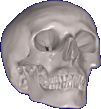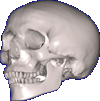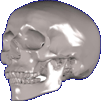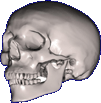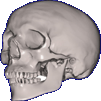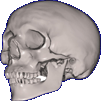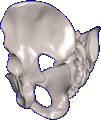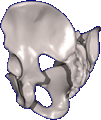
We introduce Light Collages - a lighting design system for effective visualization based on principles of human perception. Artists and illustrators enhance perception of features with lighting that is locally consistent and globally inconsistent. Inspired by these techniques, we design the placement of light sources to convey a greater sense of realism and better perception of shape with globally inconsistent lighting. Our algorithm segments the input model into a set of patches using a curvature-based-watershed method. The light placement function models the appropriateness of light directions for illuminating the model. This is done by using the curvature-based segmentation as well as the diffuse and specular illumination at every vertex. Lights are placed and assigned to patches based on the light placement function. Silhouette lighting and proximity shadows are added for feature enhancement.
The last two decades have witnessed impressive advances in algorithms for lighting simulation. However, effective lighting design has remained a challenge. Effective lighting design can convey a large number of data features such as local surface orientation, curvature, silhouettes, and fine texture. Our interest in lighting design for effective scientific visualization is inspired by research that examines the human perception of art. Local techniques for lighting have been successfully used by artists and illustrators to convey lighting and shading. What is interesting about these techniques is that they convey a powerful impression of geometry, although the lighting across the surface is inconsistent. It is even more interesting that although the geometry of perspective has been well understood for the past five centuries, the geometry of consistent lighting has been largely ignored in art. However, not only have these globally inconsistent lighting unnoticed by most untrained human observers, lighting for such paintings is visually impressive and sometimes even deeply compelling.
Artists use inconsistent lighting for a couple of reasons. First, it is convenient. Consistent lighting is often not worth the effort since hardly anyone notices it. Second, the artists can use inconsistent lighting to guide the viewer's attention and enhance comprehensibility. In this research we explore the implications of globally inconsistent lighting for enhancing the visualization of scientific datasets. Inconsistent lighting, as used in art, might allow us to convey a better perception of geometry than consistent lighting. Here we use this observation in optimizing light placement to convey a greater sense of realism when visualizing scientific datasets.
In this research we propose the idea of Light Collages that involves lighting different regions of a 3D object with multiple light sources to render it in a more visually comprehensible manner, while retaining its traditional 3D-graphics-rendered look and feel. The main contributions of this research are:
- Globally Inconsistent Lighting : This research discusses a method of local illumination that is locally accurate, globally inconsistent, and yet presents more comprehensible renderings.
- Lighting Design : We discuss placement of multiple light sources to enhance view-dependent visualization.
- Feature Enhancement : Silhouettes and shadows add important details in technical illustrations. Here we show how silhouette and shadow lighting can be integrated into a local illumination framework for enhancing features in scientific datasets.
We have implemented the Light Collages system in OpenGL. Our Light Collages framework designs the lighting so that the diffuse illumination is proportional to the local curvature and specular highlights are only on highly curved regions. This helps elucidate geometry details. Our system casts the proximity shadow to nicely illustrates the depth relationship between two adjacent regions in the rendered image. To make the objects stand out from their background, the system enhances the silhouette by producing a dark silhouette for a bright background and a bright silhouette for a dark background.
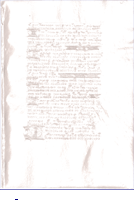
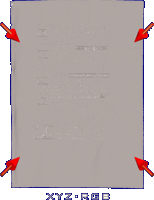
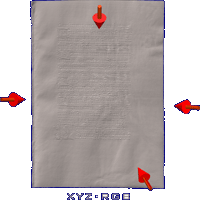
One Consistent Light Four Consistent Lights Four Light Collages Lights Manuscript model courtesy of Paul Debevec, USC and XYZ RGB Inc.
We have introduced Light Collages as a system for automatic lighting design for effective visualization of scientific datasets. Our method relies on using multiple light sources that can be used for accurate local lighting on surfaces, with possible global inconsistencies. The human visual system is remarkably adept at inferring shape from largely local cues, and hence our system, even with global lighting inconsistencies can produce comprehensible renderings. We have shown how our method can incorporate silhouette lighting as well as proximity shadows to further elucidate the local structure of the scientific datasets. We believe our method greatly improves the visualization while retaining the look and feel of traditional 3D graphics illumination models.
- C. H. Lee, X. Hao, and A. Varshney, Light Collages: Lighting Design for Effective Visualization, IEEE Visualization 2004, Austin, TX, October 2004
This work has been supported in part by the NSF grants: IIS 00-81847, CCF 04-29753, and CNS 04-03313. This material is based upon work supported by the National Science Foundation under grants IIS 00-81847, CCF 04-29753, and CNS 04-03313. Any opinions, findings, and conclusions or recommendations expressed in this material are those of the author(s) and do not necessarily reflect the views of the National Science Foundation.

Web Accessibility




